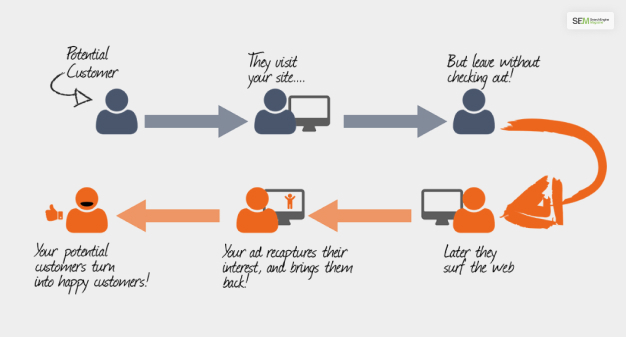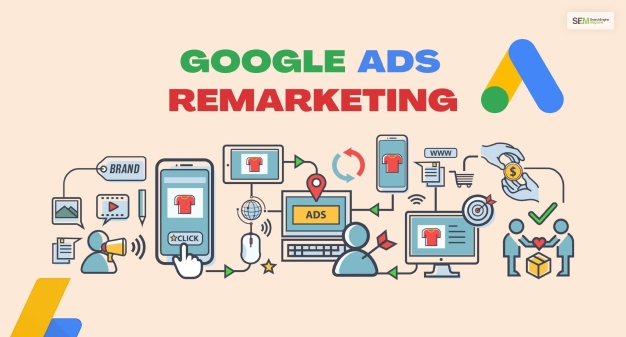How To Optimize Images For SEO? Easy Steps To Improve Site Speed And Ranking
Jul 15, 2025

Jul 15, 2025

Jul 12, 2025

Jul 12, 2025

Jul 12, 2025

Jul 10, 2025

Jul 07, 2025

Jul 07, 2025

Jul 04, 2025
Sorry, but nothing matched your search "". Please try again with some different keywords.


What Criteria Could Not Be Used To Create A Dynamic Remarketing Audience?
A dynamic remarketing strategy lets you show advertisements to customers who have previously visited your website.
It is a process of bringing your previous leads and customers back to the website. Dynamic advertisement on Google tailors marketing messages from your brand to your customers with criteria that include three options here.
However, one of them needs to be corrected according to the terms and conditions of the Google Dynamic remarketing ads. This article should help you find out the incorrect option.

As you can see, there are four options given above. One of them is wrong according to how dynamic ads work. Here is the answer – users who returned an item they purchased.
Dynamic remarketing helps convince customers who are in different phases of their buyer’s journey. Some buyers only view certain products on your website, while some of them leave the products saved in the cart. These leads or prospects need different levels of convincing to purchase from you finally.
The people who only viewed your website need more convincing about the value of your product or services to make a purchase. On the other hand, people who added the product to the cart don’t need much convincing.
Dynamic ads tailor marketing content based on the segmentation of the leads and customers. However, this segmentation does not include customers who purchased and returned a product. That is why they belong to something other than the criteria useful for making dynamic remarketing.
Read More: 10 Social Media Marketing Mistakes that Stop Business Growth

Perhaps, reading more about Dynamic remarketing will help you get a clearer idea.
Dynamic remarketing shows your ads to the people who have previously viewed your website or viewed your products using mobile apps. These ads hit the iron when it is hot. Meaning – show the ads to the audience when they are interested.
These types of ads appear to customers who have visited your website previously. Their action shows their intention to buy from a seller. Dynamic remarketing tailors ads depending on the position of a lead in the sales funnel. It is also a process to bring previous visitors to your site and complete the sales process.

Here are the steps for creating dynamic remarketing ads for audiences in Google ads –
Read More: Top Marketing Strategies To Boost Your Retail Business
Here are some similar and relatable questions and answers regarding dynamic remarketing. You may find them useful.
Ans: It is not possible to define some remarketing audiences by default. Here are some of those audiences – Event, Category, Action, Unique Events, Label, and Value.
Ans: Here are four things you can base targeted ads on while using dynamic remarketing –
1. Content or products the leads viewed on your site.
2. Top-performing and relatable content on different products.
Leads’ demographics.
3. Purchase histories of the clients.
Ans: Google Analytics can help you create a remarketing audience based on the analytics data of your website. This includes almost all types of audiences. This data includes all default Analytics data and data imported from the linked Google Ads account.
This remarketing process is targeted towards customers who have only PREVIOUSLY VISITED your site. But google does not mention the same about the customers who have purchased and returned a product. According to this, we can conclude that customers who have purchased and returned products are not criteria for dynamic remarketing.
What Criteria Could Not Be Used To Create A Dynamic Remarketing Audience? I hope you have found the answer to this question. However, if you have any further queries, you may comment below.
Read Also:
Shahnawaz is a passionate and professional Content writer. He loves to read, write, draw and share his knowledge in different niches like Technology, Cryptocurrency, Travel, Social Media, Social Media Marketing, and Healthcare.
View all Posts
How To Optimize Images For SEO? Easy Steps To...
Jul 15, 2025
Quickwin: Your Gateway To Premium Online Ente...
Jul 12, 2025
Top 7 HVAC Marketing Mistakes That Are Tankin...
Jul 12, 2025
8 Top AI Market Research Tools For Fast And A...
Jul 12, 2025
How A Smart Seo Agency Uses Guest Posting To ...
Jul 10, 2025

